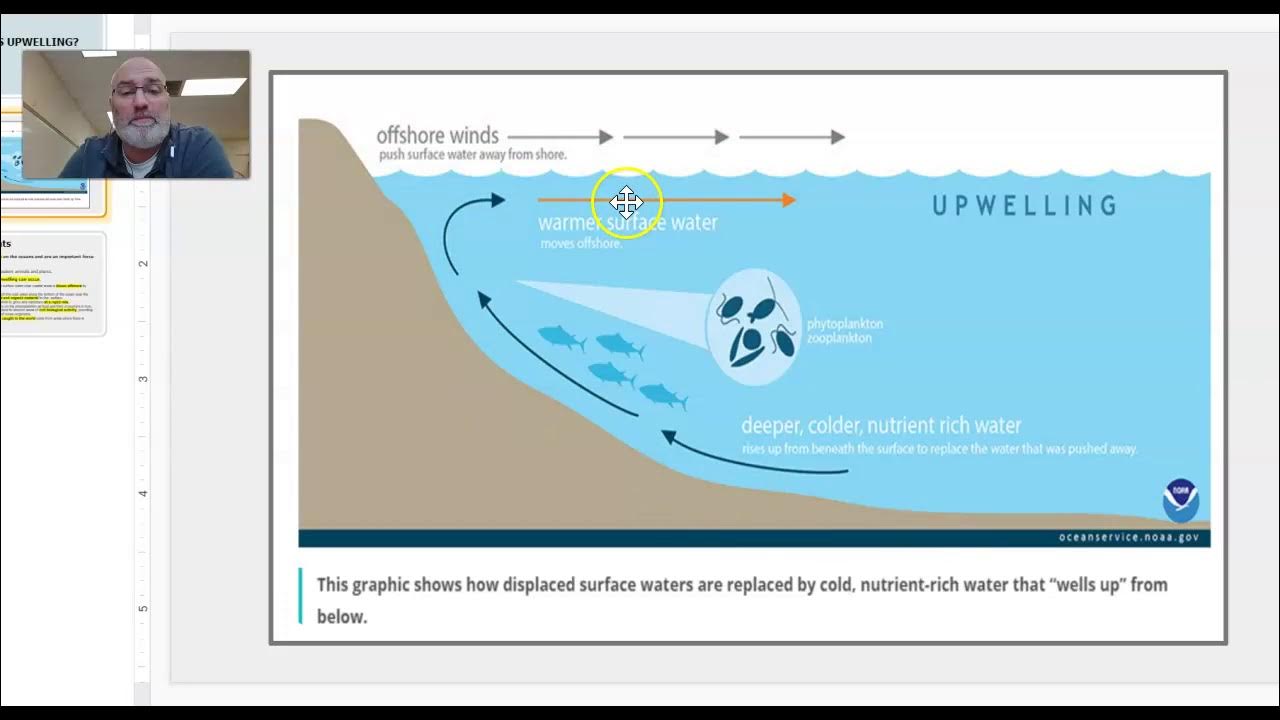The ocean is changing colors, researchers say. Here's what it means.
Summary
TLDRThe video discusses the impact of ocean warming on phytoplankton, which are crucial to the marine food chain. Ocean warming leads to changes in the physical properties of the water, affecting the chlorophyll concentrations that indicate phytoplankton presence. Satellite data is used to measure these changes, highlighting the correlation between phytoplankton levels and CO2 concentrations in the atmosphere. This could affect climate change and the productivity of fisheries. Less productive areas may become even less so, while more productive areas may see increased phytoplankton, impacting ecosystems and marine life.
Takeaways
- 🌊 The ocean is warming, which raises concerns about its biological consequences.
- 🔬 Temperature changes are the primary physical changes occurring in the ocean due to warming.
- 🦠 Phytoplankton, the base of the ocean's food chain, are affected by changes in the ocean's temperature.
- 🌿 Phytoplankton are algae with photosynthetic pigments, giving waters a green color when abundant and a blue color when absent.
- 📊 Satellites measure solar radiation reflected by the water, and algorithms estimate chlorophyll concentration to track phytoplankton levels.
- 🌱 Green waters indicate an increase in chlorophyll, while blue waters signify a decrease in phytoplankton.
- 🌍 Changes in phytoplankton can impact atmospheric CO2 levels, influencing climate change.
- 🐟 Phytoplankton are crucial food sources for many marine animals, and their decrease can lead to a drop in animal populations.
- ⚡ If trends continue, areas already low in productivity will become even less productive, affecting fisheries.
- 🚢 Highly productive areas could become even more productive, affecting ocean ecosystems and industries reliant on them.
Q & A
What is the main topic of the video script?
-The main topic of the script is the impact of ocean warming on biological systems, particularly the effects on phytoplankton and its broader implications for the food chain and climate change.
What physical changes are being observed in the ocean due to warming?
-The primary physical change observed in the ocean is the increase in temperature, which impacts various biological processes in the ecosystem, especially the behavior of phytoplankton.
How does ocean warming affect phytoplankton?
-Ocean warming affects phytoplankton by altering their distribution and abundance. This can result in changes in chlorophyll levels, affecting the color of the ocean and disrupting the food chain.
What role do phytoplankton play in the ocean's ecosystem?
-Phytoplankton are the foundation of the ocean's food chain. They are algae that use photosynthesis to produce energy, providing a crucial food source for marine animals.
What is the significance of chlorophyll in the ocean's ecosystem?
-Chlorophyll is a key component of phytoplankton, and its concentration indicates the health and productivity of marine ecosystems. Areas with high chlorophyll concentration are typically more productive in terms of marine life.
How does satellite technology measure chlorophyll in the ocean?
-Satellites measure the solar radiation reflected by the ocean's surface, using algorithms to estimate chlorophyll concentration based on this reflected light.
What does an increase in chlorophyll in the ocean indicate?
-An increase in chlorophyll typically means a higher concentration of phytoplankton in the water, suggesting that the area is more productive in terms of marine life.
How does phytoplankton concentration affect atmospheric CO2 levels?
-Phytoplankton play a significant role in regulating atmospheric CO2 levels. They absorb CO2 during photosynthesis, and changes in their population can influence the amount of CO2 in the atmosphere, thus affecting climate change.
What would happen if the trends of declining phytoplankton continue?
-If phytoplankton populations continue to decline, it would lead to reduced food availability for marine animals, which could result in a decline in their populations and have broader impacts on marine ecosystems.
How would a decrease in phytoplankton productivity impact fisheries?
-A decrease in phytoplankton productivity would reduce the overall productivity of marine ecosystems, negatively affecting fisheries by reducing fish stocks that rely on these organisms as a food source.
Outlines

This section is available to paid users only. Please upgrade to access this part.
Upgrade NowMindmap

This section is available to paid users only. Please upgrade to access this part.
Upgrade NowKeywords

This section is available to paid users only. Please upgrade to access this part.
Upgrade NowHighlights

This section is available to paid users only. Please upgrade to access this part.
Upgrade NowTranscripts

This section is available to paid users only. Please upgrade to access this part.
Upgrade Now5.0 / 5 (0 votes)





